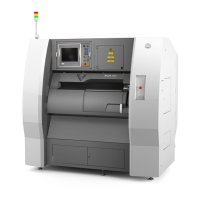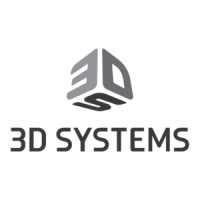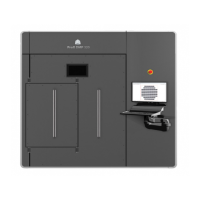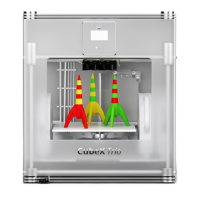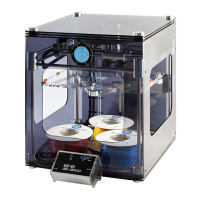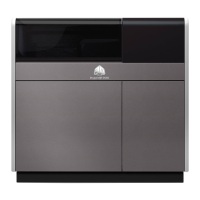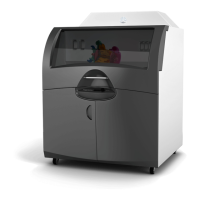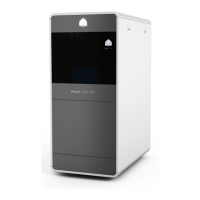3D Systems, Inc.
28
p/n: 15-D99, rev. C
UTILITIES AND EQUIPMENT REQUIREMENTS
6.1 Atmosphere Requirements
6.1.1 Room Ventilation
The printing process takes place under an inert argon atmosphere inside the process chamber. During the preparation, loading,
and unloading, argon gas is released to the workplace. In small rooms, argon volumes exhausted into the room may be
The printing process takes place under an inert argon atmosphere inside the process chamber. During the preparation and
loading /unloading, the machine argon gas is released to the workplace. Therefore, in small rooms, a minimum ventilation is
required.
During cleaning of the machine, powder particles/dust may become airborne. The presence of metal powders in the work
area air is unsafe and must be avoided as much as possible. Therefore adequate room ventilation is recommended, as well as
wearing PPE (Personal protective equipment).
A. Air Conditioning
The facility air conditioning system where the printer is operating should be capable of dissipating 1.0 kW (3412 Btu or 0.28 ton
U.S. refrigeration) of heat or equivalent to keep temperature requirements. Ensure that any air conditioning ducting does not
vent directly onto the machine.
B. Room Air Source
The facility HVAC system provides source air only. Air that is introduced into the room is not allowed to recirculate back into
ATMOSPHERIC VARIABLES REQUIREMENTS
Room temperature controls
End user must ensure constant temperature in operating room.
Heating and air conditioning may be required.
In case of A/C present, it should not blow on top of process station.
Temperature
Operating range: (16 to 27) °C; (60 to 80) °F
Setpoint range: (18 to 24) °C; (65 to 75) °F
Stability: ± 2 °C (± 5 °F)
Non-condensing relative humidity No lower than 20% and no higher than 80%
Room air changes 4 per hour minimum
Heat dissipation
Maximum: 3.2 kW (11000 BTU/hr)
Average: 2.4 kW ( 8200 BTU/hr)
Atmospheric corrosives None; Clean Dry Air (CDA) is required
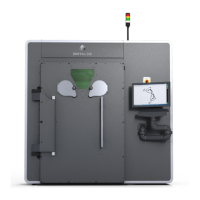
